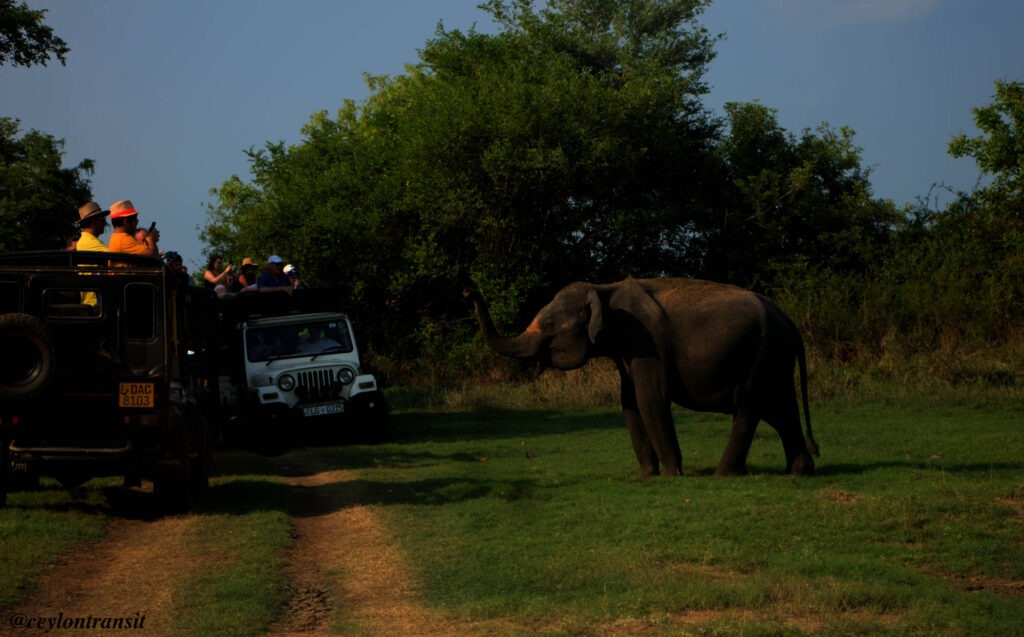


Kaudulla National Park – A Wildlife Haven in Sri Lanka
Introduction Kaudulla National Park is a protected area in Sri Lanka, located 197 kilometers (122 miles) from Colombo, the country’s largest city. Established on April 1, 2002, it is the 15th national park in Sri Lanka. The park has become a popular tourist destination, attracting over 10,000 visitors in the 2004–2005 season, generating an income of Rs.100,000 through entrance fees. Kaudulla is also part of a vital bird conservation zone along with Minneriya and Girithale, as identified by BirdLife International.
Historical Significance Kaudulla National Park is home to one of the 16 irrigation tanks built by King Mahasen during ancient Sri Lanka. After a period of abandonment, the tank was restored in 1959. Today, the park supports a rich diversity of wildlife, including large mammals, birds, reptiles, and fish, thanks to its abundant plant and animal life.
Physical Features of Kaudulla National Park The park receives an annual rainfall of 1,500–2,000 millimeters (59–79 inches), primarily from the northeast monsoon. The dry period extends from April to October. The temperature ranges from 20.6°C (69.1°F) to 34.5°C (94.1°F). During the rainy season, the park’s vegetation flourishes, providing ample food and water to support herbivorous mammals throughout the year.
Flora of Kaudulla National Park The park features Sri Lanka’s dry evergreen forests, with chena cultivation and grasslands surrounding the tank area. Dominant tree species include Manilkara hexandra, Chloroxylon swietenia, and Vitex altissima. Additionally, bushes like Randia dumetorum and Calotropis gigantea, along with grasses such as Imperata cylindrica and Panicum maximum, are common in the park.
Fauna of Kaudulla National Park Kaudulla National Park is home to an impressive variety of wildlife, including:
Mammals: 24 species, including Sri Lankan elephants, Sri Lankan sambar deer, Sri Lankan axis deer, wild boar, Sri Lankan leopard, sloth bear, and chevrotain. The park is famous for its large herds of elephants, particularly during the dry season when they migrate from Minneriya to Kaudulla for water and food.
Reptiles: 25 species, including freshwater turtles, the Indian flap-shelled turtle, and the Indian black turtle.
Birds: Over 160 species, including large water birds like the spot-billed pelican and lesser adjutant. The park is a crucial bird-watching destination.
Fish: 26 species, such as the freshwater Oreochromis mossambicus.
Amphibians: The endemic Fejervarya pulla is found in the park.
Kaudulla is also known for its population of gray slender loris and is the only park in Sri Lanka with reports of albino Sri Lankan axis deer, including a rare two-month-old albino calf discovered in the park.
Conservation Challenges While Kaudulla National Park is a rich biodiversity hotspot, it faces threats from invasive species like Lantana camara, which affect the park’s wildlife. In response, the Kaudulla-Minneriya jungle corridor connecting Kaudulla to Minneriya National Park was designated as a Wildlife Sanctuary in 2004 to protect the area’s unique ecosystem.
Conclusion Kaudulla National Park is a vital ecological treasure in Sri Lanka, offering a haven for wildlife enthusiasts, nature lovers, and conservationists. The park’s rich flora, diverse fauna, and historical significance make it a must-visit destination for those looking to experience Sri Lanka’s natural beauty.
Ceylon Transit
Typically replies within minutes
Hello! How can we help you?
WhatsApp Us
🟢 Online | Privacy policy